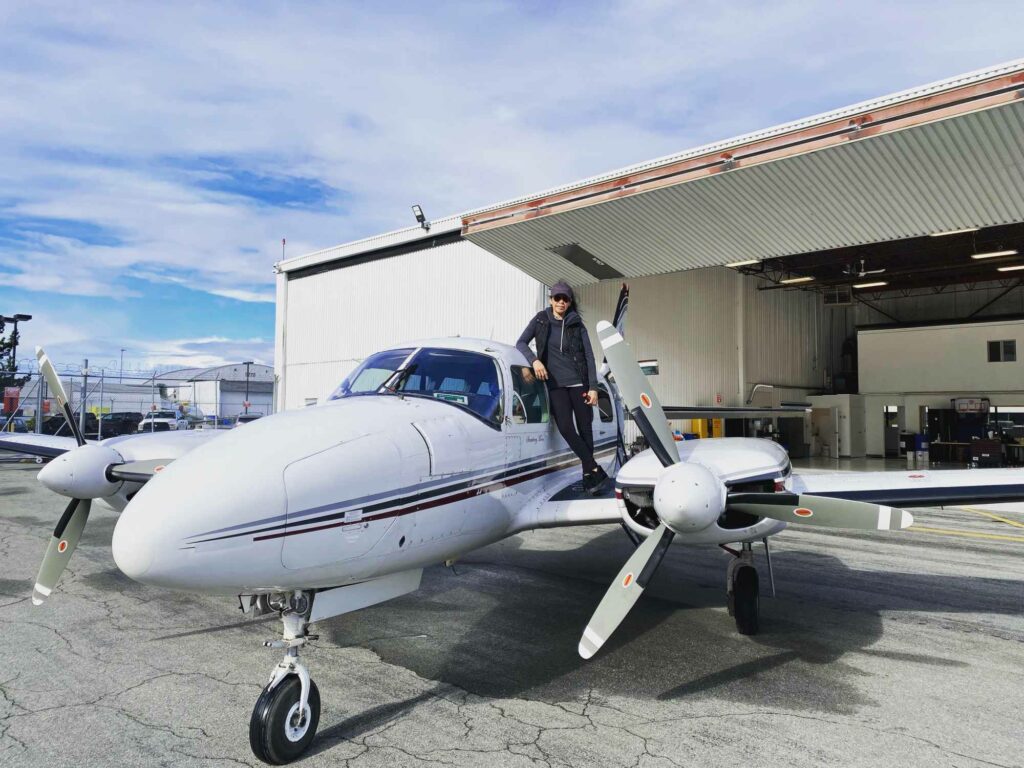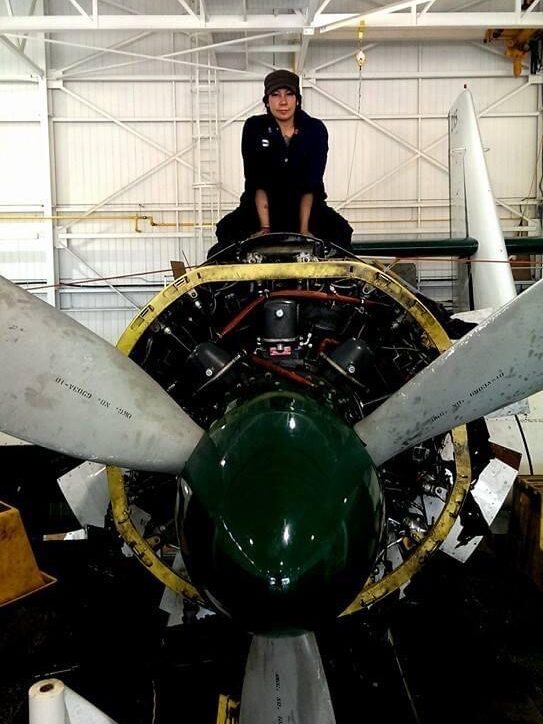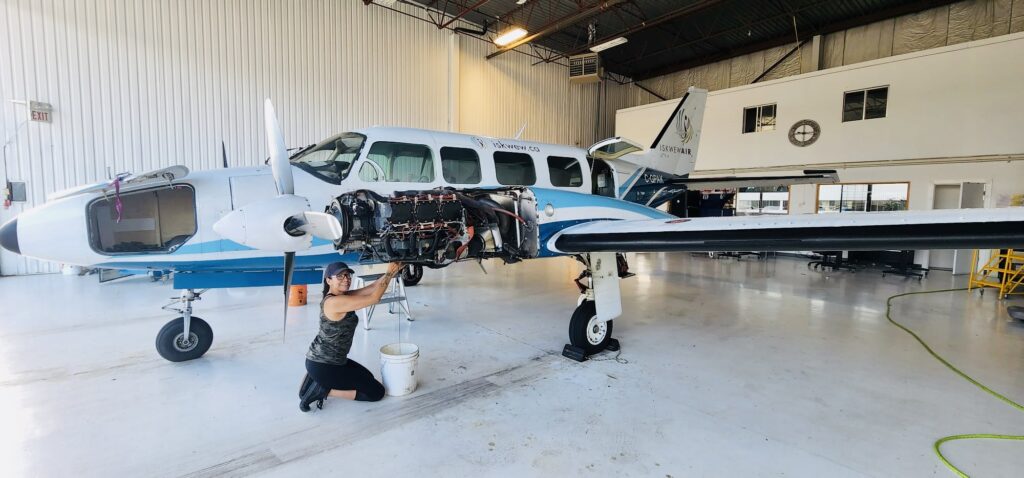Estimated reading time 8 minutes, 18 seconds.
“Another worn tire,” she thought. “What should I have expected?”
Repair to the landing gear of the aircraft that Kris McAdam works on, as an aircraft maintenance engineer (AME), is one of her most common tasks while in the hangar of Iskwew Air.
Based in Vancouver, Iskwew Air is the first airline in Canada founded and owned by an Indigenous woman, and operates two Piper PA-31 Navajo Chieftains — known as Sweetgrass Warrior and Strawberry Moon. Of all the aircraft that McAdam has worked on throughout her AME career, the Navajo is her favorite.

“I love them; they’re my size, they’re perfect,” she said. “Whereas with Canadair CL-215s, [for example], you’re lifting 70 or 80 pounds above your shoulders.”
Having good physical strength is something McAdam says is essential to her job as an AME.
Recalling her apprentice days, she said: “I was struggling to ask for help with changing the starter generator in a CL-215. I remember lifting up the starter generator, [with] my mentor standing probably about two feet away. I said, ‘Well, aren’t you going to help me?’ And he said, ‘Kris, you’re going to have to learn to do things on your own. What if we’re not around? What if you’re out in the field by yourself one day? Then what are you going to do?’”
Her mentor had set a physical challenge for her — a lesson that she needed to learn to be self-reliant in the field — because many factors in aviation can be unpredictable.
Raised by her grandfather in Saskatchewan, McAdam was exposed to his backyard mechanic work area from an early age. When she heard that the Saskatchewan Indian Institute of Technologies (SIIT) was offering a new AME diploma program, “I thought, ‘Well, I’ll give it a shot,’” McAdam shared.

“I knew it was [right] for me when I realized I was good with my hands, as well as problem solving. “
At the time, McAdam was the only female student at the school.
The aircraft maintenance program was introduced in 2010 with support from the Canadian government, as the aerospace industry was in need of more AMEs. While the program aims to encourage First Nations/Metis students to join the industry, it is open to all qualified applicants.
Right out of the program, McAdam was hired by Saskatchewan Wildfire Management in 2013, where she worked mainly with CL-215s. It was there that she earned her AME M1 and M2 ratings, which expanded her options of the size of aircraft she could work with.
Today, McAdam is thriving as an AME at Iskwew Air, where she has worked since 2021. But her journey to where she is now was not all smooth sailing. While aviation remains a heavily male-dominated industry, McAdam has faced challenges of acceptance throughout her career — and will likely continue to face such challenges. Her strategy has been to bring a positive attitude to every situation.
“Setting a positive mood [and] positive environment; coming out there and being able to take the negativity and not dwell in it; being able to push through with positive insight,” has been a personality strength that McAdam has cultivated over the course of her career, she said.

Finding emotional support among her peers has been very important to McAdam, too. From her school days, to her career with Saskatchewan Wildfire Management, to her current role at Iskwew Air, “There were a few AME women who I worked with who helped shape me, almost like a sisterhood,” shared McAdam. “We had each other’s backs — talking to each other for support emotionally; strengthening each other; telling each other we can do the tasks at hand; and complementing [each other].”
Most importantly, self-care is at the top of her list of things to do before her work day even begins. On a typical work day, “I wake up [and] I go to the gym because I work on myself before I can help anybody else. That’s my start button; it gets me going,” she said. “Then I come to the hangar and get everything started for the day. I look at the stat sheets, work with the apprentices, sit with the pilot and talk about what’s going to happen, [and then] do some inspections.”
While her job can be both physically and emotionally demanding, McAdam says she faces the challenges of being an AME by simply believing in herself and bringing her best every day.
“Troubleshooting problems, [having] good hand-eye coordination, looking for deviations, completing tasks on time, being aware, scheduling maintenance in an orderly fashion, shipping and receiving parts for type-certified aircraft… I love this life,” said McAdam.

With this week (March 6 to 12) being Women of Aviation Worldwide Week, McAdam concluded: “I am grateful to be a woman, [and] I hope more [women] join this industry.
“I’m rooting for us all.”









Congratulation Kris, more women in aviation is welcome and women AMEs can be as good as men AMEs. Young girls give it a try and go for it.
Well done Kris!!! You’re an incredible role model and an inspiration to us all.